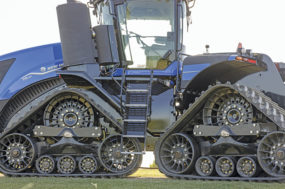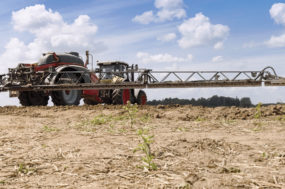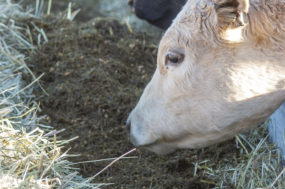Mistake #1: Lack of seedbed preparation
The first step in planting starts with a soil test. If a soil test result is acidic, in a no-till system it won’t make an immediate impact to hurry and spread lime if it’s not incorporated into the soil, Bates said. Research shows that in a no-till system it takes one to one-and-a-half years for soil pH to raise from 5.3 to 6.
“And no-till doesn’t mean you don’t prepare the seedbed,” Bates said. “Most folks who have tried to establish alfalfa in no-till systems can tell of great successes and just as great failures.” In any establishment system, no-till or conventional, Bates emphasized it’s easier to control weeds before seeding rather than after. Many weeds can be chemically controlled before alfalfa seeding, but once the alfalfa has been seeded options are limited. Since all vegetation can be killed prior to seeding in a no-till system, the new alfalfa seedling has no vegetative competition, greatly enhancing its survival.
Mistake #2: Wrong timing
“One of the most common questions I get,” Bates said, “is folks asking if it’s too late to plant. It seems like we always want permission to plant late and either have it work or have someone to blame.”
Timing, Bates said, may be one of the biggest differences between seeding methods of alfalfa. In conventional tillage, planting can happen in spring or fall. With no-till, spring seedings seem best, he advised. Sclerotinia crown rot can be a big problem with fall-seeded alfalfa, but it’s greatest potential for damage is with no-till alfalfa. The biggest opportunity for damage from this fungus is heading into winter. After roots are established, the plants develop tolerance for it. Spring seeding allows for the roots to establish before challenged with the first winter.
The window for spring seeding in a no-till system is generally longer than for a conventional tillage system, Bates said. A killed sod retains moisture longer into the late spring, and seedbed moisture is key to germination, so the planting window is extended. While there is no “ideal time,” Bates said, there is a “right window” that increases the chances of successful establishment.
Mistake #3: Wrong amount
“How many of you have planted all your seed on half the acreage?” Bates asked the audience, and nearly every hand in the room went up, amidst quite a few chuckles. “Yup, we’ve all been there,” Bates said. “The short of it is, don’t trust the chart.”
Bates said many producers rent no-till machinery, which come with a seed-flow chart to help with seeding rates. However, with use and age, the actual seed flow may vary considerably from the chart values. And it could be important to adjust based on seed coating. Any adjustments should be made when calibrating the drill before seeding.
Mistake #4: Improper depth
“Every quarter of an inch matters,” Bates said, when addressing planting depth. Research shows seeding depth is critical to emergence and establishment. Until the seed breaks the soil surface, it depends on stored energy to grow. If a seed is planted too deep, it increases the energy required to complete emergence. Because the alfalfa seed is so small, its stored energy is limited and has to be planted at a shallow depth (1/4 to ½ inch deep) for proper establishment. In a no-till system, this becomes critical as the coulters cut through sod and litter to reach soil. Soil moisture also affects the depth of the furrow cut by the coulters. Therefore, the coulters need to be run through the field to calibrate planting depth prior to planting.
Bates said, “What we usually hear is ‘they sold me bad seed!’ But unless you have saved some seed by sticking a small container of it in the back of the refrigerator for a germination test later, there’s no way to know if it really was bad seed.” He suggested producers save seed from every planting, just in case there is a germination problem.
Pay attention to the details
“You can follow every guideline and still fail, depending on Mother Nature, and sometimes you can bend a guideline and it still works,” Bates said. “But to play the odds, pay attention to the details.” ![]()
Refrences omitted but available upon request.
For more information on eastablishing alfalfa using no-till techiniques, click here.
PHOTO: Coated (right) and uncoated (left) alfalfa seed is prepared for shipping at Summit Seed Coatings in Caldwell, Idaho. Photo by Lynn Jaynes.

-
Lynn Jaynes
- Managing Editor
- Progressive Forage
- Email Lynn Jaynes











